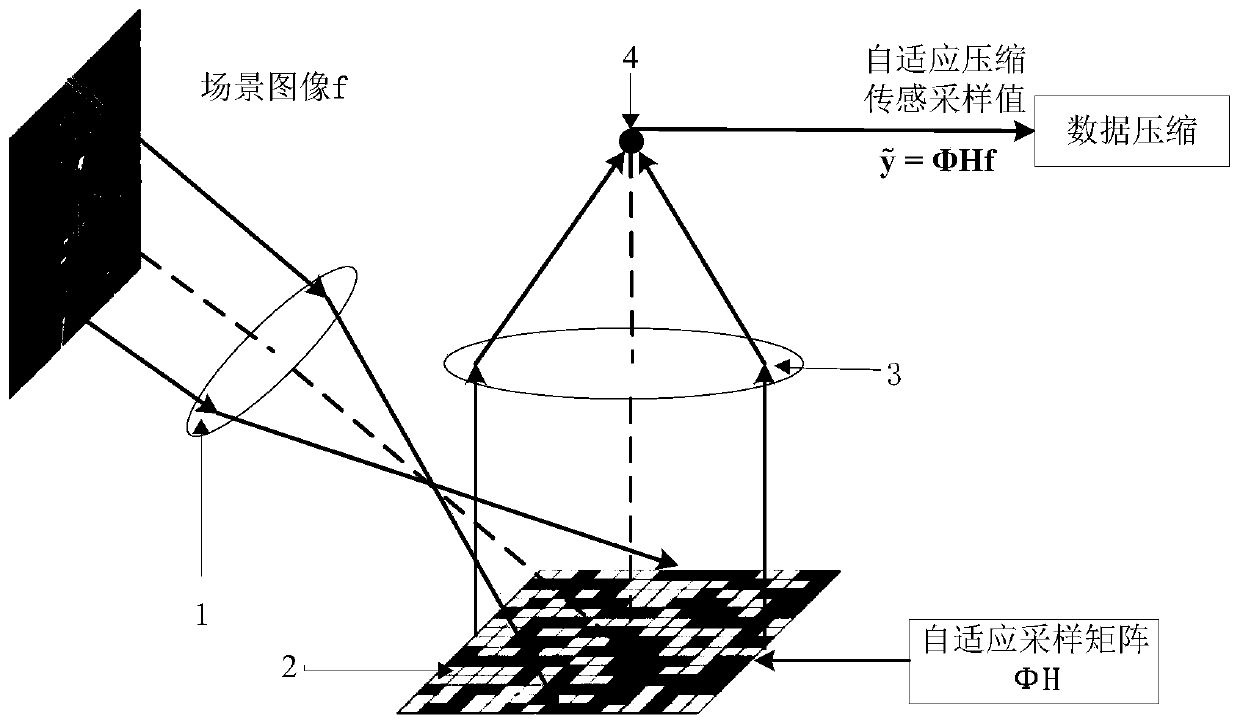An Adaptive Compressive Sensing Image Acquisition Method Based on Optimal Truncation Model
A technology of compressed sensing and acquisition methods, which is applied in the field of image processing, can solve the problems of increased system cost and complexity, failure to meet the needs of application scenarios, and limited computing resources by energy supply of digital image processing systems, so as to reduce computational complexity, Effects that improve image quality
- Summary
- Abstract
- Description
- Claims
- Application Information
AI Technical Summary
Problems solved by technology
Method used
Image
Examples
Embodiment Construction
[0023] The present invention will be further described below in conjunction with the accompanying drawings and embodiments.
[0024] see figure 1 , the present invention comprises the following steps:
[0025] Step 1: The scene image is transmitted to the spatial light modulator 2 through the first lens 1 to form a scene image signal f;
[0026] Step 2: Use an optimal coefficient truncation model to determine the position of the transformation domain coefficient truncation point of the scene image signal f, and according to the difference in the sampling rate of the compressed sensing, the input scene image signal f in the adaptive compressed sensing module Adaptive truncation of the transform domain coefficients, and the sampling method based on the compressed sensing theory is used to obtain the truncated scene image signal f, to obtain the adaptive compressed sensing sampling value, and pass it through the optical signal through the second The lens 3 is transmitted to the...
PUM
 Login to View More
Login to View More Abstract
Description
Claims
Application Information
 Login to View More
Login to View More - R&D
- Intellectual Property
- Life Sciences
- Materials
- Tech Scout
- Unparalleled Data Quality
- Higher Quality Content
- 60% Fewer Hallucinations
Browse by: Latest US Patents, China's latest patents, Technical Efficacy Thesaurus, Application Domain, Technology Topic, Popular Technical Reports.
© 2025 PatSnap. All rights reserved.Legal|Privacy policy|Modern Slavery Act Transparency Statement|Sitemap|About US| Contact US: help@patsnap.com



